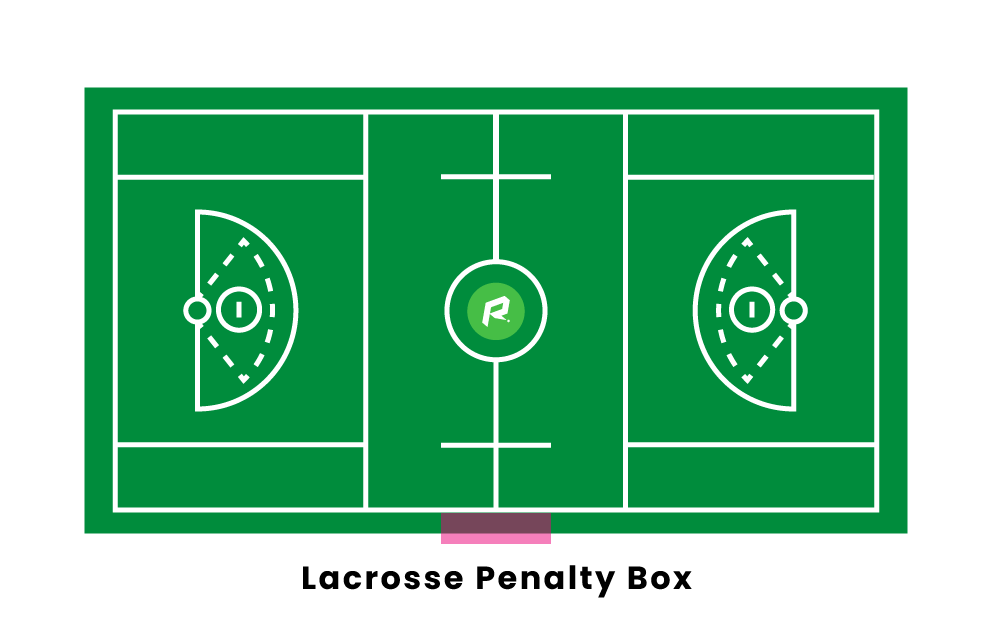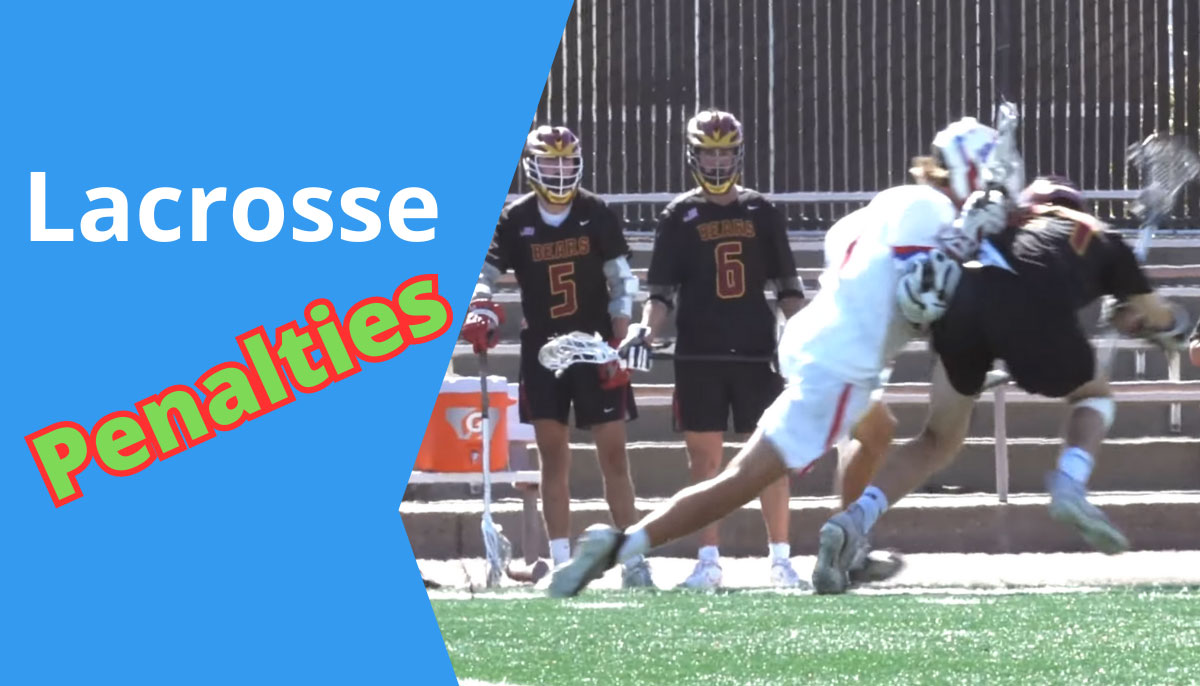If you’re a lacrosse fan, you know that penalties are a part of the game. It’s important to understand the various penalties and fouls that can be called, as well as their consequences. Whether you’re a player, coach, or spectator, knowing the rules and regulations of the game can help you better appreciate the sport.
Lacrosse penalties can vary depending on the level of play, but some of the most common fouls include cross-checking, holding, slashing, and tripping. Cross-checking occurs when a player hits an opposing player with the middle of their shaft while their hands are wide apart. Holding is when a player impedes the movement of an opposing player. Slashing involves hitting an opposing player with the stick while tripping is when a player trips an opposing player with their stick, body, or feet.
Understanding the rules and regulations of lacrosse penalties can help you better appreciate the game and avoid unnecessary fouls. In this article, we’ll take a closer look at some of the most common penalties in lacrosse and what they mean for players and teams. Whether you’re a seasoned player or new to the sport, this guide will provide the knowledge you need to understand the rules and regulations of this subject.
Types of Lacrosse Penalties
When playing lacrosse, it is important to understand the different types of penalties that can be called during a game. Penalties can be divided into three categories: personal fouls, technical fouls, and unsportsmanlike conduct.
Personal Fouls
Personal fouls are called for actions that are considered dangerous or violent and can result in a player being suspended from the game. Here are some examples of personal fouls:
- Slashing: hitting an opponent with your stick
- Tripping: using your stick or body to trip an opponent
- Cross-checking: hitting an opponent with the shaft of your stick
- Illegal body check: hitting an opponent who is not in possession of the ball
Technical Fouls
Technical fouls are called for violations that are less severe than personal fouls but still give an advantage to the offending team. Technical fouls result in a player being removed from the field for a short period of time. Here are some examples of technical fouls:
- Holding: impeding the movement of an opponent
- Offsides: having too many players on one side of the field
- Warding off: pushing an opponent away with your free hand while in possession of the ball
- Stalling: intentionally delaying the game
Unsportsmanlike Conduct
Unsportsmanlike conduct penalties are called for actions that are not related to the game itself but are considered inappropriate or disrespectful. These lacrosse penalties can result in a player being removed from the game and possibly suspended for future games. Here are some examples of unsportsmanlike conduct:
- Taunting: making insulting or derogatory remarks to an opponent
- Fighting: engaging in physical altercations with opponents
- Illegal equipment: using equipment that does not meet safety standards or is not allowed by the rules
- Delay of game: intentionally delaying the game for any reason
It is important to remember that penalties are called to ensure the safety of all players and to maintain the integrity of the game. As a player, you should always strive to play within the rules and avoid actions that could result in penalties.
Consequences of Lacrosse Penalties
Some consequences can affect the game’s outcome when a player commits a penalty. Understanding these consequences is crucial for players to avoid committing penalties and for coaches to teach their players the importance of playing within the rules.
Time in the Penalty Box
When a player commits a penalty, they must serve time in the penalty box. The amount of time depends on the severity of the penalty. For example, a minor penalty usually results in a 1-2 minute penalty, while a major penalty can result in a 5-minute penalty or even ejection from the game.
During the time in the penalty box, the player’s team must play with one less player on the field. This can put the team at a disadvantage and make it easier for the opposing team to score. It is essential for players to avoid committing penalties that could result in significant time in the penalty box.

Man-Down Defense
When a player is serving time in the penalty box, their team must play with one less player on the field. This means that the team is playing with a man-down defense. The other team now has an advantage and can take advantage of the situation to score more goals.
To counter this, the team must play a strong man-down defense. The remaining players must work together to prevent the opposing team from scoring. They must communicate effectively and move quickly to cover the open areas on the field.
Game Ejection
In some cases, a player may commit a penalty that is severe enough to result in ejection from the game. This means that the player cannot return to the game and must leave the field. In addition, the team must play with one less player for the remainder of the game.
Game ejection can be a severe consequence, as it not only affects the current game but also the next game. If a player is ejected from a game, they may face additional consequences, such as suspension from future games.
In conclusion, committing penalties in lacrosse can have severe consequences that can affect the game’s outcome. It is essential for players to play within the rules and avoid committing penalties that could result in significant time in the penalty box, man-down defense, or game ejection.
Avoiding Penalties
Lacrosse penalties can be costly, both for the individual player and the team. Avoiding penalties is a crucial aspect of the game, and can make the difference between winning and losing. Here are some tips to help you avoid penalties on the field.
Proper Equipment
One of the best ways to avoid penalties is to ensure you have the proper equipment. This includes wearing a helmet, mouthguard, gloves, shoulder pads, and arm pads. Make sure that your equipment fits properly and is in good condition. If your equipment is too loose or too tight, it can affect your ability to play the game and increase your risk of injury.
Fair Play
Fair play is another important aspect of avoiding lacrosse penalties. Play the game with respect for your opponents and the rules. Avoid using excessive force or engaging in unsportsmanlike conduct. This includes taunting, trash-talking, and other behavior that can be seen as disrespectful or aggressive. Remember, lacrosse is a physical sport but should also be played with integrity and sportsmanship.
Communication
Effective communication is key to avoiding penalties. Ensure you communicate with your teammates and coaches throughout the game. This includes calling out plays, giving and receiving feedback, and staying aware of what is happening on the field. Good communication can help prevent collisions and other incidents that can result in penalties.
In addition to these tips, staying up-to-date on the game’s rules is important. Familiarize yourself with the different types of lacrosse penalties and what can result in a penalty. Practice good sportsmanship and fair play, and always prioritize safety on the field. By following these tips, you can help reduce your risk of penalties and play a more successful game.
Penalty Enforcement
As with any sport, penalties are an integral part of lacrosse. As a player, it is important to understand how penalty enforcement works in order to avoid committing fouls and to know how to react when a penalty is called against you or your team.
Referee Signals
When a penalty is called, the referee will use a specific signal to indicate the type of lacrosse penalties and the player who committed it. Here are some common referee signals:
- Holding: The referee will cross their arms in front of their chest.
- Illegal body checking: The referee will make a punching motion with one hand.
- Slashing: The referee will make a chopping motion with their arm.
- Unnecessary roughness: The referee will make a throwing motion with their arm.
Penalty Calls
When a penalty is called, the offending player will be sent to the penalty box for a designated amount of time, depending on the severity of the penalty. During this time, their team will be short-handed and have to play without them.
It is important to note that some lacrosse penalties are “releasable,” meaning that the player can return to the field if the opposing team scores a goal. Other penalties are “non-releasable,” meaning that the player must serve the entire penalty, regardless of whether or not the opposing team scores.
Appealing a Call
You can appeal to the referee if you or your team disagrees with a penalty call. However, it is important to do so respectfully and within the rules of the game. Here are some guidelines for appealing a call:
- Only the team captain is allowed to speak to the referee.
- The appeal must be made immediately after the call is made.
- The appeal must be made in a calm and respectful manner.
- The referee’s decision is final and cannot be overruled.
In conclusion, understanding penalty enforcement in lacrosse is crucial for both players and coaches. By familiarizing yourself with the referee signals, penalty calls, and guidelines for appealing a call, you can ensure that you are playing the game within the rules and avoiding unnecessary lacrosse penalties.















